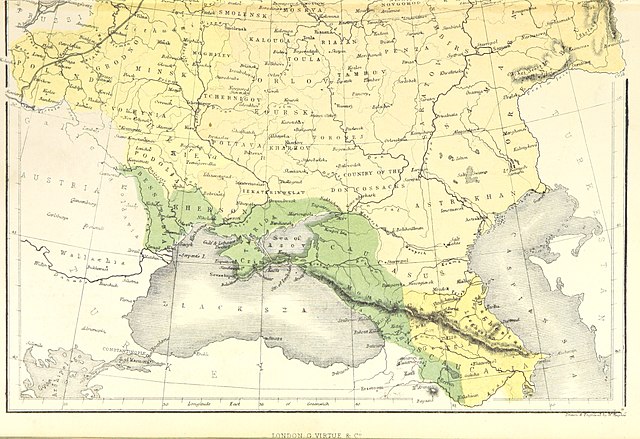Abdulhamid or Abdul Hamid II was the 34th sultan of the Ottoman Empire, from 1876 to 1909, and the last sultan to exert effective control over the fracturing state. He oversaw a period of decline with rebellions, and presided over an unsuccessful war with the Russian Empire (1877–78), the loss of Egypt and Cyprus from Ottoman control, followed by a successful war against the Kingdom of Greece in 1897, though Ottoman gains were tempered by subsequent Western European intervention.
Prince Abdul Hamid at Balmoral Castle in 1867, accompanying his uncle Sultan Abdulaziz during his visit to Western Europe between 21 June 1867 – 7 August 1867.
Ottoman troops under Romanian attack at the Siege of Plevna (1877) in the Russo-Turkish War (1877–78)
Şehzade (Prince) Abdul Hamid in 1868.
An example of what once hung on the Door of Repentance of the Ka'ba in 1897 until 1898. It was made in Egypt under Abdul Hamid II's ruling of the Ottoman Empire. His name is stitched into the fifth line following a verse from the Qur'an.
Decline and modernization of the Ottoman Empire
In the late 18th century, the Ottoman Empire faced threats on numerous frontiers from multiple industrialised European powers. In response, the empire initiated a period of internal reform, attempting to bring itself into competition with the expanding West. The period of these reforms is known as the Tanzimat, and led to the end of the Old Regime period. Despite the Ottoman empire's precarious international position, the central state was significantly strengthened. The process of reforming and modernization in the empire began with the declaration of the Nizam-I Cedid during the reign of Sultan Selim III and was punctuated by several reform decrees, such as the Hatt-ı Şerif of Gülhane in 1839 and the Hatt-ı Hümayun in 1856. Over the course of the 19th century, the Ottoman state became increasingly powerful and rationalized, exercising a greater degree of influence over its population than in any previous era.
The decline of the Ottoman Empire in the 17th, 18th, and 19th centuries
Mustafa Reşid Pasha, the principal architect of the Edict of Gülhane
The green color marks the territories that were ceded to Russia following the wars with Turkey from the 17th century to the first half of the 19th century.
The Armenian national movement








